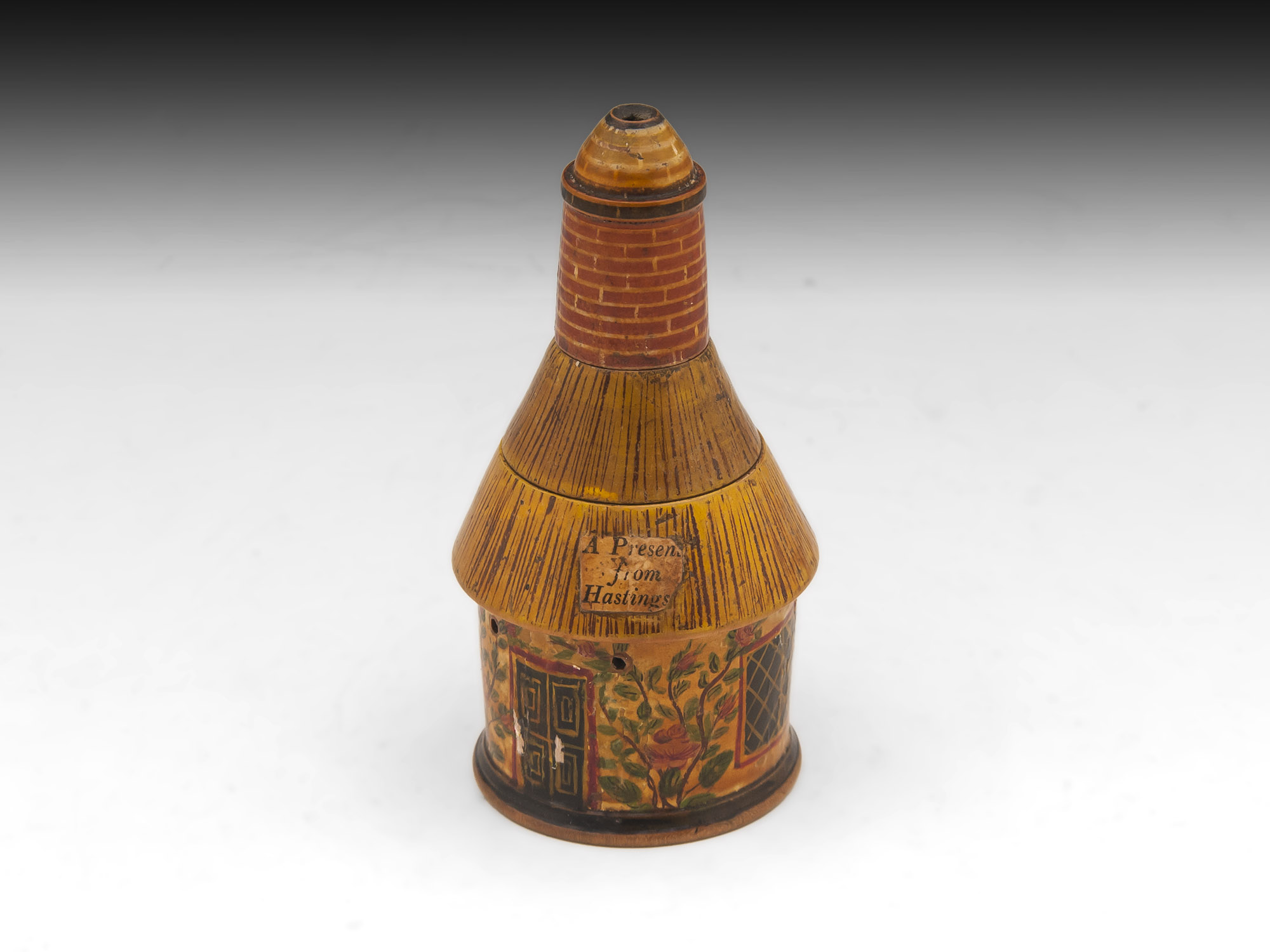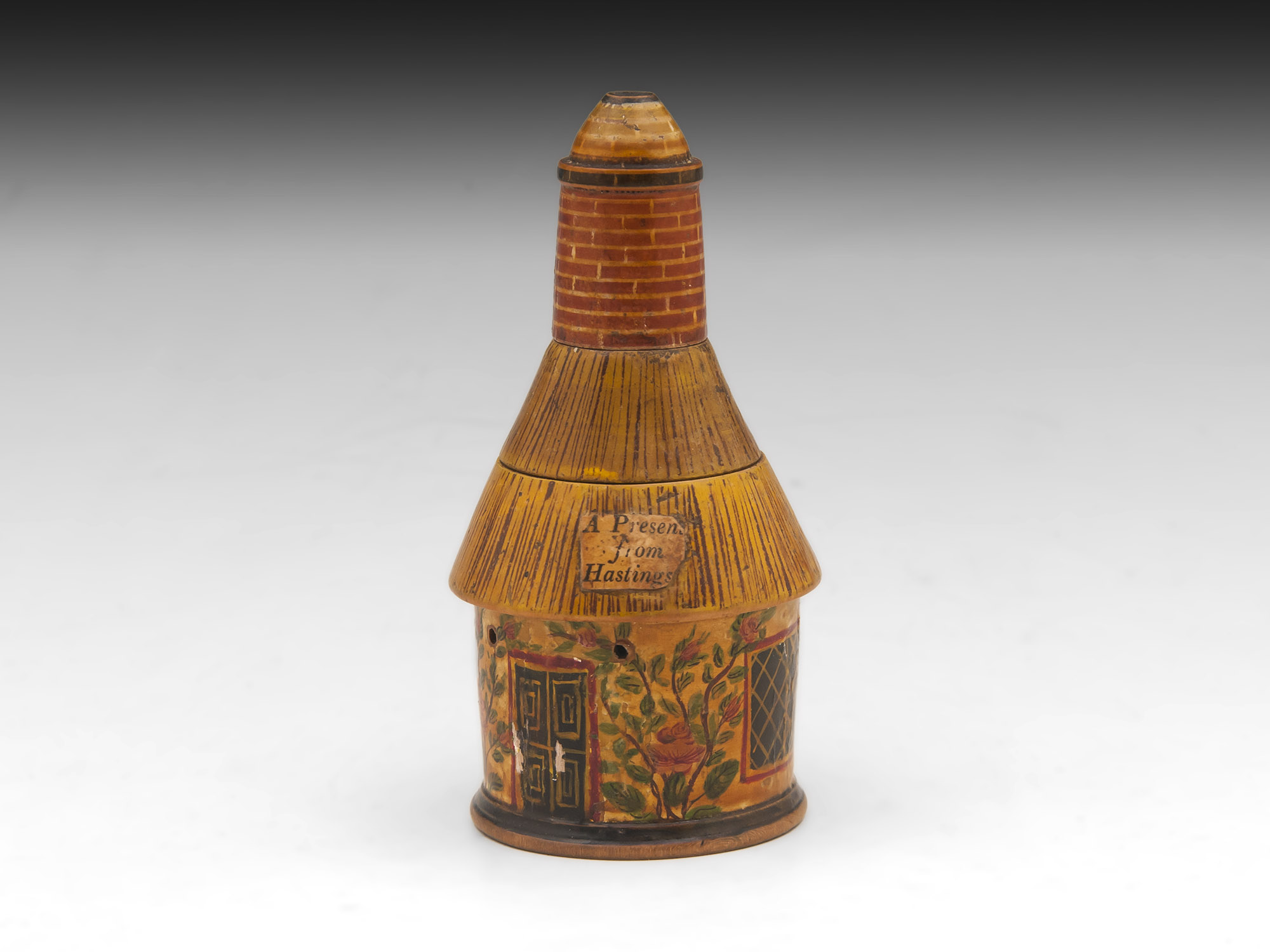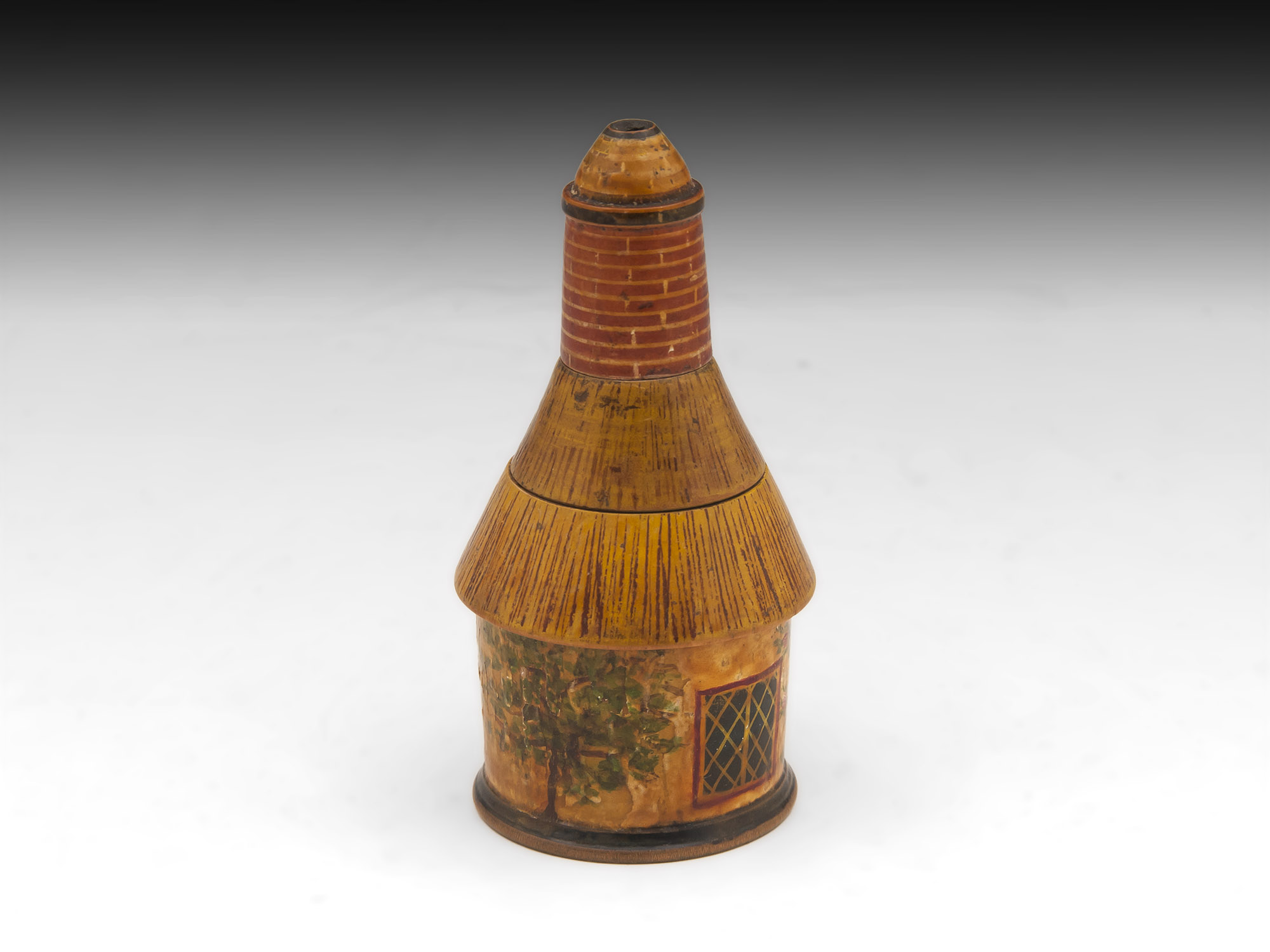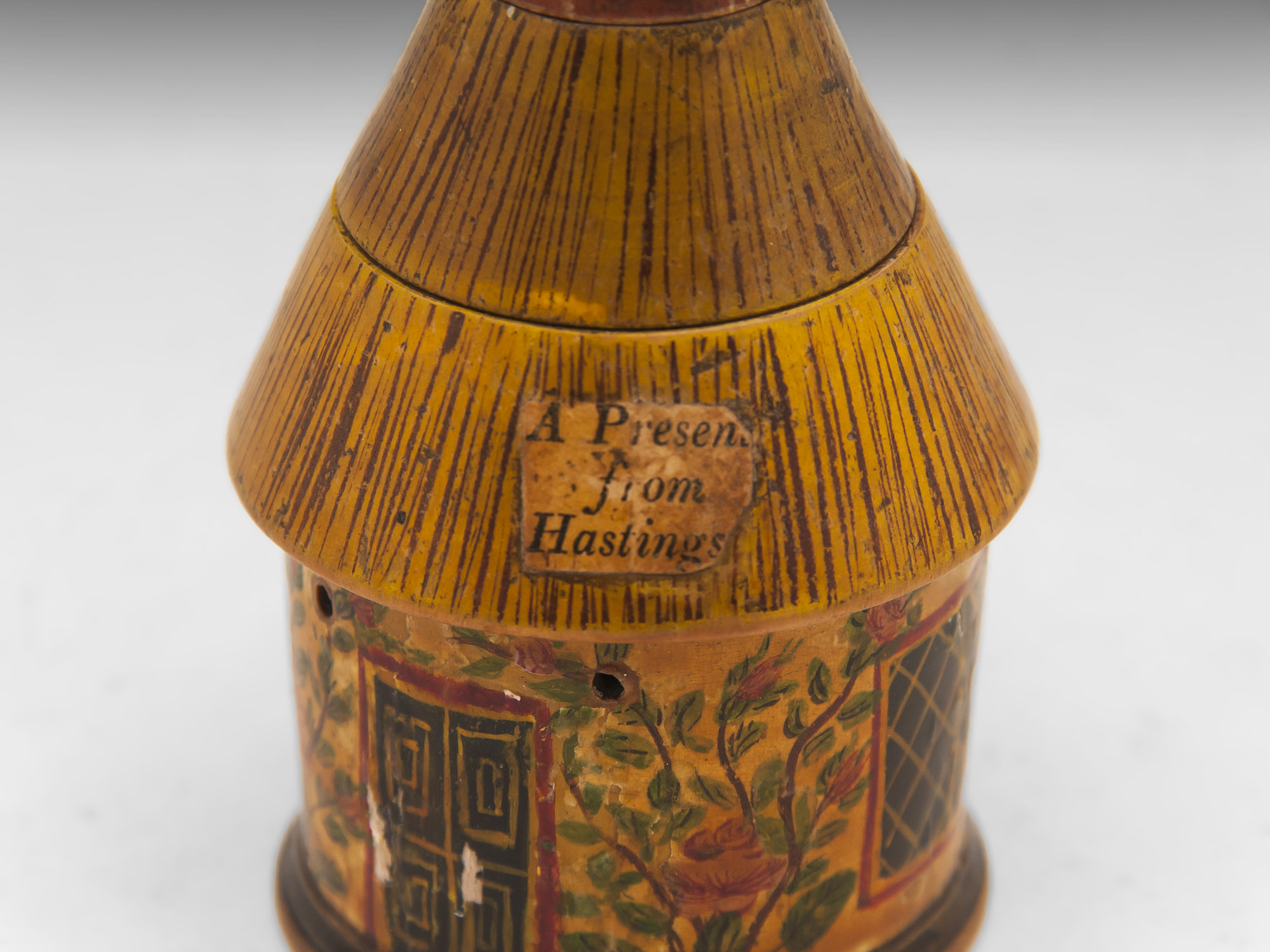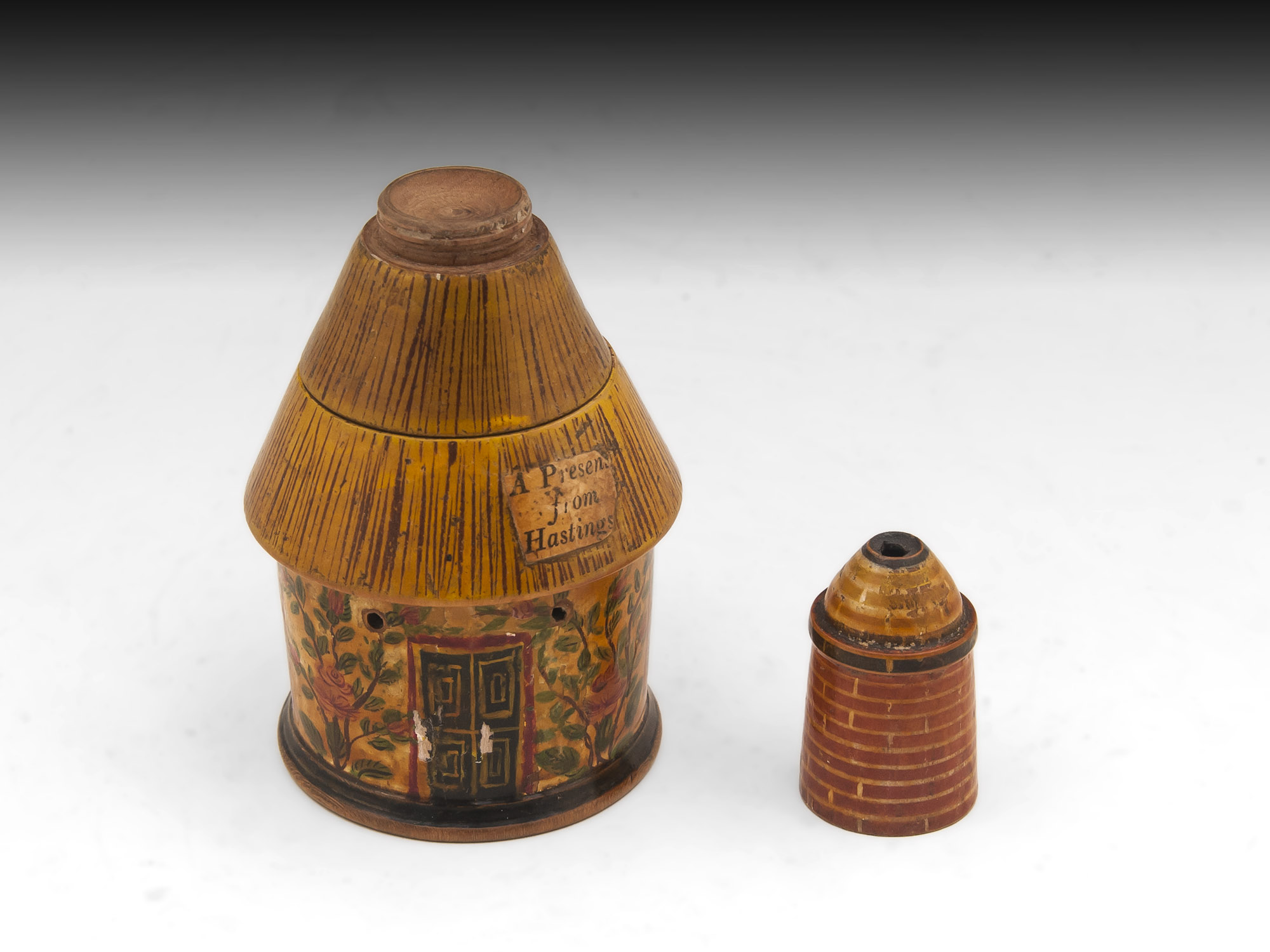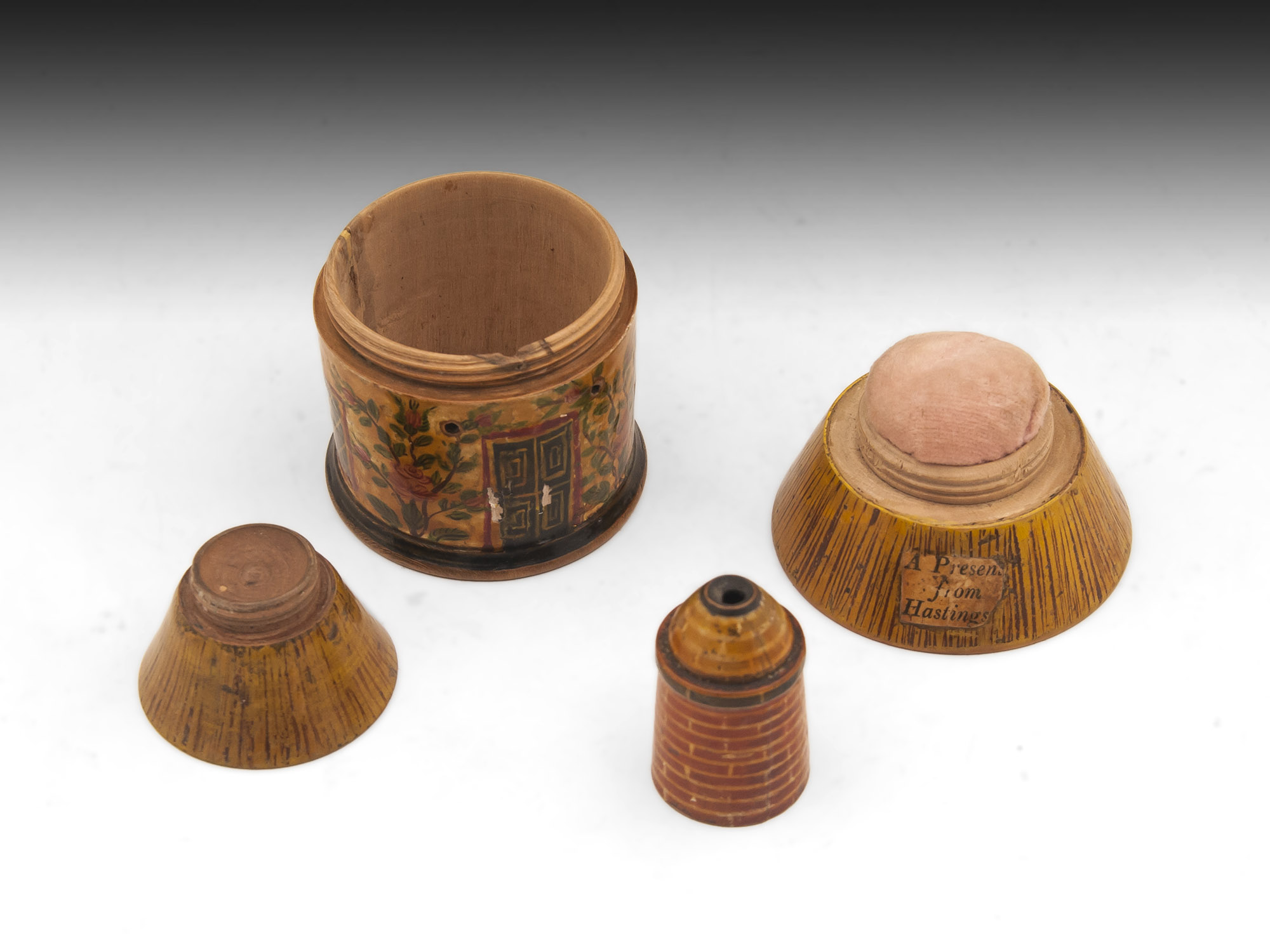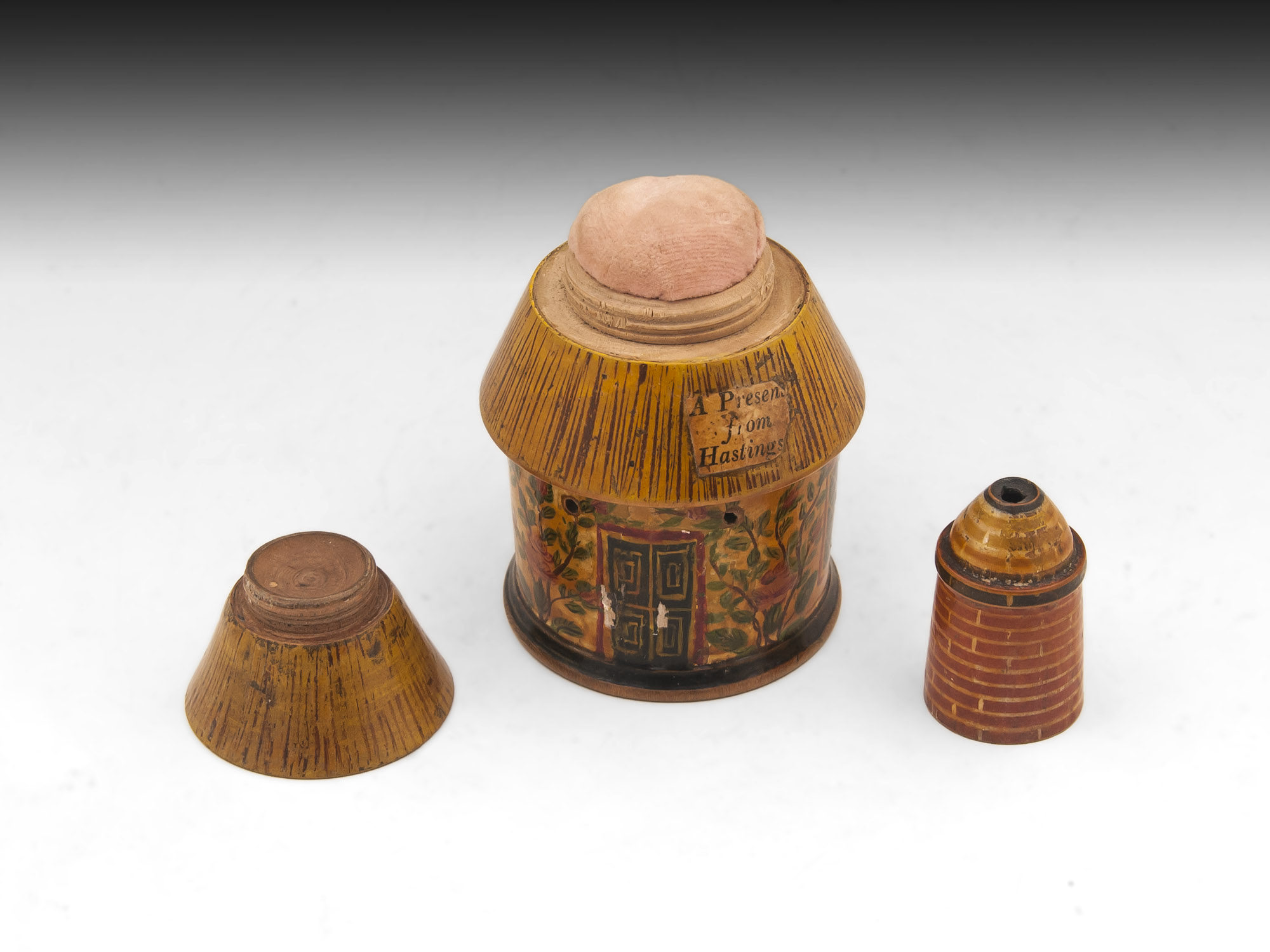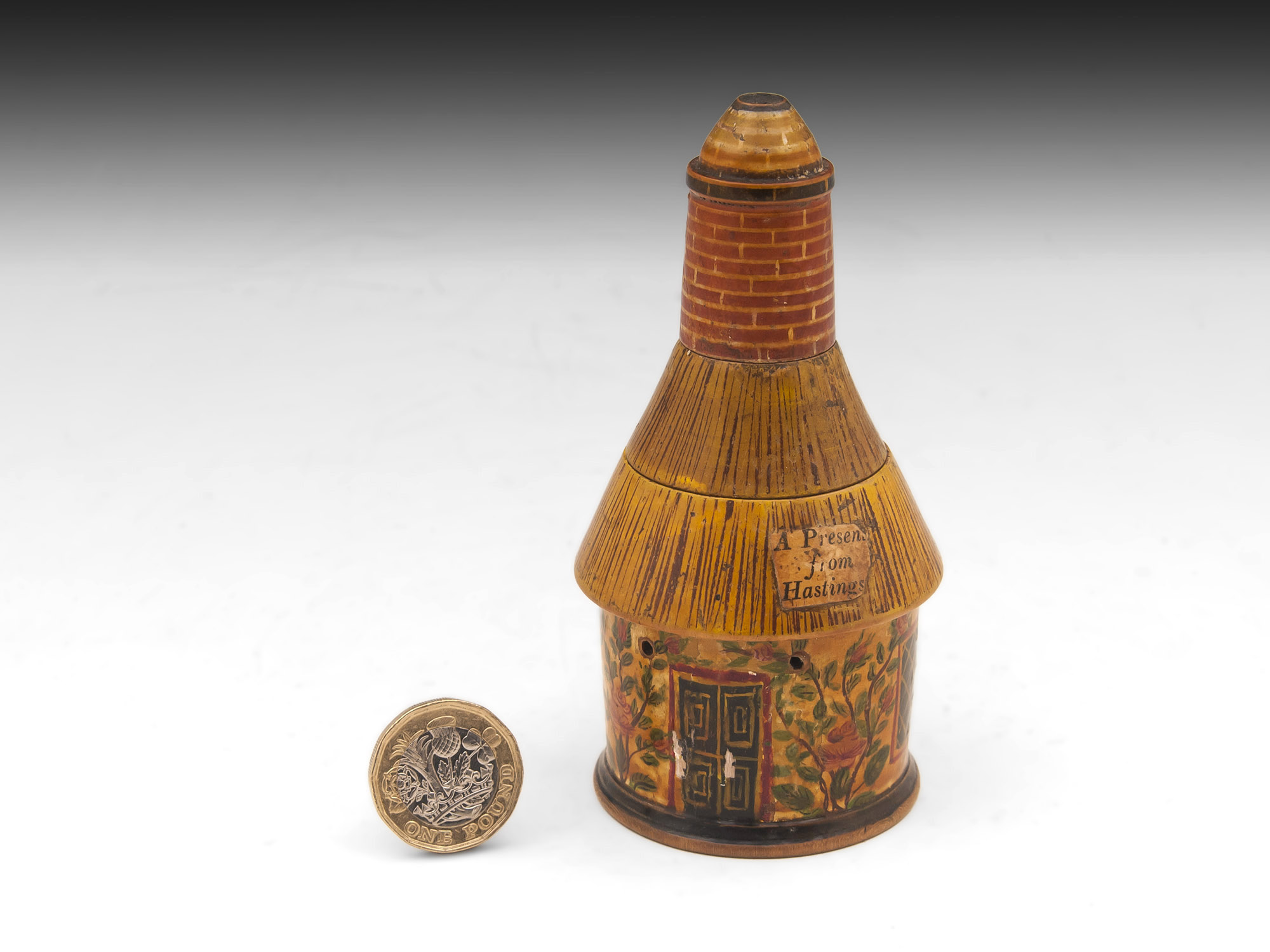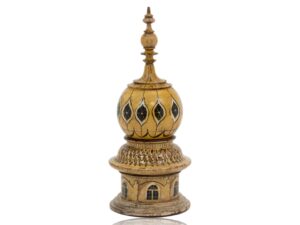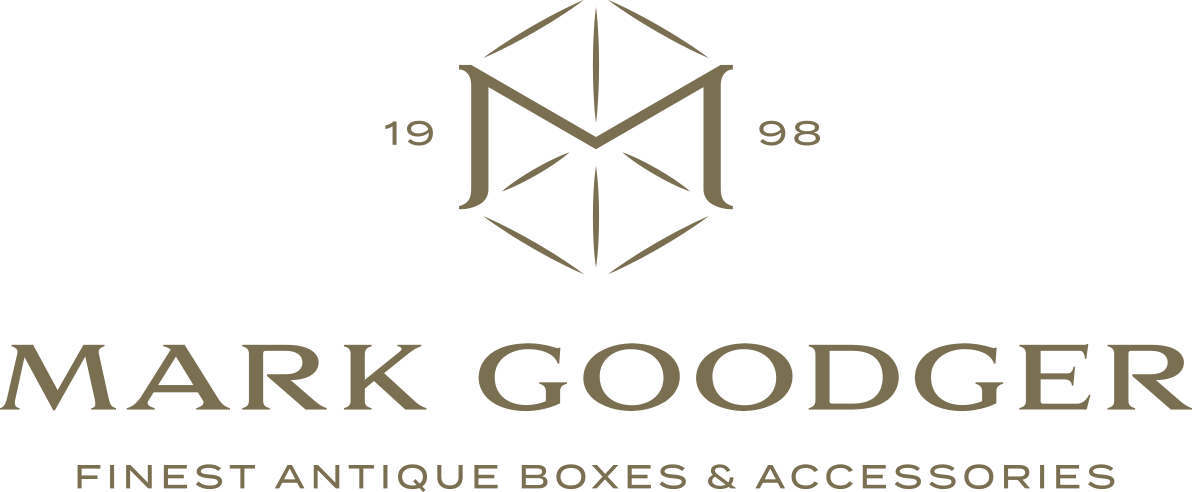Tunbridge Ware Sewing Companion
SOLD
Charming painted Tunbridge Ware sewing companion in the form of a small thatched roof house. With painted door, windows and tree on the body, simulated thatch on the roof and brickwork on the chimney. The roof section features a small... Read More
| Dimensions | 11 cm |
|---|---|
| Period | |
| Year | |
| Medium | |
| Country | |
| Provenance | |
| Exhibition | |
| Collection | |
| SKU | 500264 |
Description
Description
Charming painted Tunbridge Ware sewing companion in the form of a small thatched roof house. With painted door, windows and tree on the body, simulated thatch on the roof and brickwork on the chimney. The roof section features a small written note which reads: “A present from Hastings”
The chimney top removes and has a hole in the top for string or cotton, half the thatched roof section unscrews to reveal its original pink pincushion that’s in excellent condition. Then the lower half unscrews to reveal a storage area for yet more thread, it has two holes which can be seen either side of the charming front door.
All our items come with authentication certificate with image, as well as our latest catalogue, care instructions and separate invoice for insurance purposes. On top of this our items come with 14 day no quibble money back guarantee and are all fully insured for when shipping.
The History of Tunbridge Ware
Tunbridge Wells and Tunbridge, an area of Kent , became popular from the seventeenth Century for the therapeutic properties of the water . By the eighteenth century the place had became a popular resort for people to socialise. Superior shops were set up to sell local work of distinction to visitors as souvenirs. Many of the souvenirs sold were boxes decorated with all sorts of different kinds of designs.
Many of the Tunbridge boxes had a central print with views of such places as castles, churches, pavilions, animals, country scenes and sometimes prints of certain people, such as the Young Prince of Wales. These were surrounded by a variety of bandings and panels of floral and geometric designs.
Perspective Cube and Vandyke were patterns in use during the late 1790s This type of design was sometimes in a three-dimensional effect which gave depth to the design. A variety of exotic timbers would be used on some boxes particularly the Cube perspective and Vandyke patterns. Around this time stick ware and tessellated mosaic patterns became popular.
Additional information
Additional information
| Dimensions | 11 cm |
|---|---|
| Period | |
| Year | |
| Medium | |
| Country | |
| Provenance | |
| Exhibition | |
| Collection | |
| SKU | 500264 |
